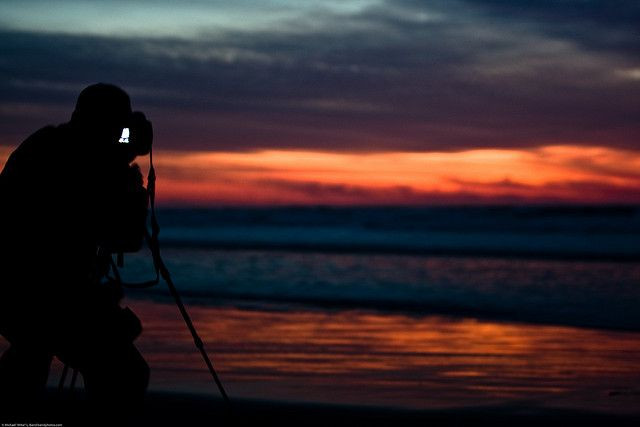Mindful Photography May Help Increase Wellness, According To Positive Psychology

According to Pema Chodron, a Buddhist teacher, author, nun, and mother, meditation isn't about getting rid of thinking. It's about changing the pattern of grasping onto things. "We are always in a struggle with other people, with situations, even with our own being. That's what we call stress," wrote Chodron. "That's what we experience as continual, on-going stress. Even in the most healthy, unneurotic of us, there's some kind of slight or very profound anxiety of some kind, some kind of uneasiness or dissatisfaction."
How do we rid ourselves of this ongoing stress? Clearly, those who find comfort in Buddhism would suggest meditation where we can enter mindfulness: "This open state which we connect with is the true nature of mind and is often described as like the big sky," said Chodron.
Another approach has been suggested by a group of positive psychologists at the University of California. Because positive psychology — the study of happiness — has demonstrated that people can sustainably increase their fulfillment by employing effortful cognitive and behavioral strategies, these researchers advocate a novel activity to enhance health and wellness: mindful photography.
Awareness
Psychology has traditionally focused on dysfunction and the treatment of those who experience mental illness or other psychological problems. By contrast, positive psychology examines how ordinary people can become happier and more fulfilled. Quite naturally, then, this study often intersects with those activities that bring contentment to people, and in the case of 'mindful photography,' the underlying psychology blends Buddhism and art.
Buddhism associates 'mindfulness' with 'sati.' Often translated as 'awareness,' sati is about returning to the awareness known as a child. Shunryu Suzuki, a Zen teacher, spoke of the expert's mind that fails to recognize anything beyond learned theories and the fact that it is the "beginner's mind" — the fresh, uncluttered baby's mind — that realizes possibilities when the expert cannot.
Mindful photography, then, has been described as 'meditative' or 'contemplative' photography, with Minor White being one of its most well-known advocates. An American photographer and editor, White became interested in the spiritual content of photographs and often gave mystical interpretations to his work. Although any experience of truly seeing requires an awareness of the present moment in which we forget ourselves, mindful photography suggests letting go of goals, expectations, techniques, and anxieties in order to more fully experience life.
Mindful photography is a state of awareness that allows you to focus on the photographic process, not just pushing the shutter button. The researchers believe mindful photography fits naturally into lessons on gratitude and happiness-increasing strategies, and can be modified to complement a variety of topics within courses in positive psychology.
Activity
In all variations of mindful photography, the researchers suggest that participants emphasize thinking about the things in life that bring happiness or joy as they take photographs of their everyday life. "What brings you positive feelings in your daily life?" It is best if mindful photographers have their cameras or phones handy and take at least five photographs, without rushing through the activity. Five photographs is a number that is sufficiently high to be involving yet not so high that the photography becomes a chore. As the activity of mindful photography is designed to focus specifically on positive emotions, it is also unconstrained, with participants finding their own subject matter.
Another variation has photographers shooting people or objects that affirm their identities or represent their important goals. In this case, mindful photographers should think about the aspects of their lives that are central to their personality. "We believe mindful photography to be effective because it helps people examine their everyday lives in a way that they normally do not - namely, through the lens of a camera, with an eye out for beauty, meaning, and value," wrote the authors. "Preliminary data on the activity are promising."
To support their conclusions, the researchers cited studies that found those who reminisce about positive emotional experiences report increases in the percent of time they felt happy. As the activity of mindful photography is all about lingering over the beauty in life, it naturally encourages a person to reminisce and savor the positives in their experience.
Source: Kurtz JL, Lyubomirsky S. Activities for Teaching Positive Psychology: A Guide for Instructors. American Psychological Association Press. 2013.
Bryant FB, Smart CM, King SP. Using the Past to Enhance the Present: Boosting Happiness Through Positive Reminiscence. Journal of Happiness Studies. 2005.



























